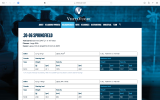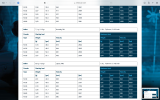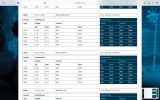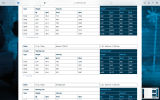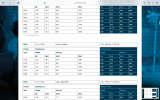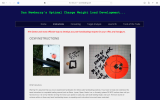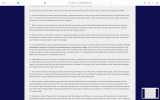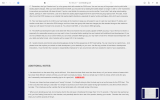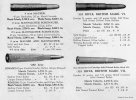SaintPanzer
AH fanatic
- Joined
- Aug 18, 2021
- Messages
- 655
- Reaction score
- 2,048
- Location
- Somewhere west of Laramie
- Media
- 1
- Member of
- NRA Life Member; Mannlicher Collectors Association
- Hunted
- USA, Germany, Poland
Yes, I'm still learning. I'm trying to figure out QuickLoad because if I can get it to work/match what I'm seeing in load manuals for rounds that I can easily find, I can use it to develop loads for rounds that are difficult to find (i.e. 6.5X54MS) or impossible to find (95.X57MS).
Playing with it today, I easily confused myself.
The load I"m starting with is your everyday 30-06. Loads abound.. Matching them... not so much.
To complicate things: I'm using VV N160 powder. My reason for this is it was in stock (which is not easy these days), there is published data, and that powder is also recommended for the 6.5 and 9.5.
The bullet chosen is the RWS 168 grain Scorion. I had thought I'd seen published data for this bullet/powder combination, but now cannot find it.
I do have published loads for three other 168 gr bullets with N160. Barnes TSX, Berger Hunter Classic, and Hornady A-Max.
Putting the published data in QL, I see similar velocities, but the max recommended loads are shown as "dangerous (above Pmax) in QL.
The minimum charge for the A-Max was dangerously high.
I checked my Hornady manual for N160 data... loads were not far off from the VV loads, but QL still said dangerously high.
So what's up with that?
Also, I know I shouldn't go below the minimum load. For my bullet/powder combo with the RWS bullets, I can use QL to calculate a "max load" where pressure touches 85% Pmax (i.e. the graph goes from yellow to cyan). But how do I select a minimum load? Is it based on case fill ratio? Something else?
I'd like to figure this out without damaging a rifle, and in a way that will easily transfer to my MS loads. Any advice is very much appreciated!
Playing with it today, I easily confused myself.
The load I"m starting with is your everyday 30-06. Loads abound.. Matching them... not so much.
To complicate things: I'm using VV N160 powder. My reason for this is it was in stock (which is not easy these days), there is published data, and that powder is also recommended for the 6.5 and 9.5.
The bullet chosen is the RWS 168 grain Scorion. I had thought I'd seen published data for this bullet/powder combination, but now cannot find it.
I do have published loads for three other 168 gr bullets with N160. Barnes TSX, Berger Hunter Classic, and Hornady A-Max.
Putting the published data in QL, I see similar velocities, but the max recommended loads are shown as "dangerous (above Pmax) in QL.
The minimum charge for the A-Max was dangerously high.
I checked my Hornady manual for N160 data... loads were not far off from the VV loads, but QL still said dangerously high.
So what's up with that?
Also, I know I shouldn't go below the minimum load. For my bullet/powder combo with the RWS bullets, I can use QL to calculate a "max load" where pressure touches 85% Pmax (i.e. the graph goes from yellow to cyan). But how do I select a minimum load? Is it based on case fill ratio? Something else?
I'd like to figure this out without damaging a rifle, and in a way that will easily transfer to my MS loads. Any advice is very much appreciated!
